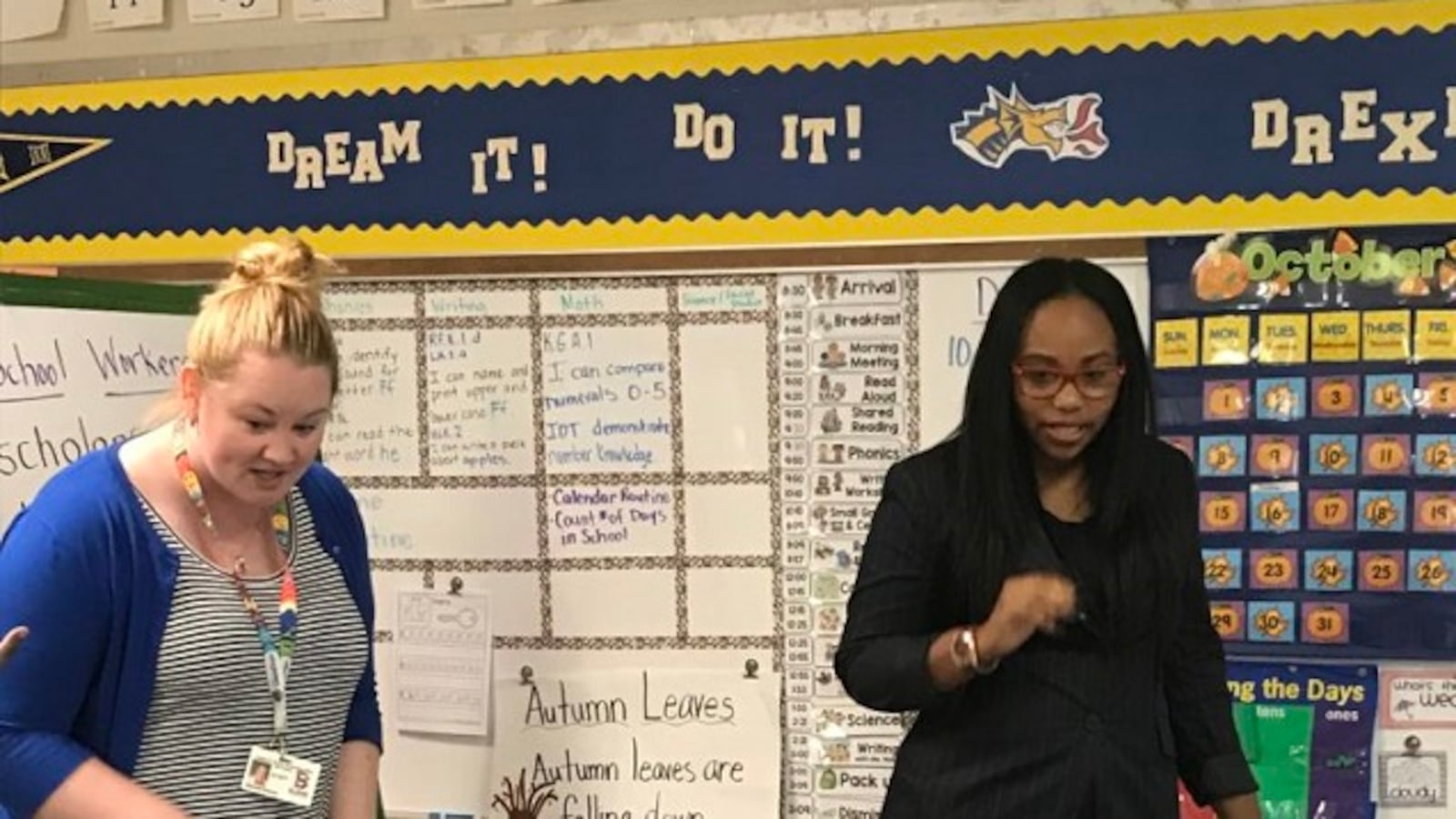This article was originally published in The Notebook. In August 2020, The Notebook became Chalkbeat Philadelphia.
We have known anecdotally that the numbers and proportion of teachers of color in Philadelphia have been on the decline, but we did not know by how much. Pennsylvania had not recently released racial data on its teachers, despite making public a wealth of other demographic information. So, the Notebook filed a Right to Know request to obtain this information from the state Department of Education. Contributing Editor Dale Mezzacappa worked with intern Lijia Liu, a Swarthmore student, and local nonprofit Research for Action to analyze the teacher data. The information from the state led to a series of stories on teacher diversity in Philadelphia, its suburbs, and Pennsylvania.
Teacher Diversity in Philadelphia and Beyond: A Notebook Series
The number of black teachers is indeed declining in Philadelphia, which employs most of the African American educators in Pennsylvania. In addition, the data showed that school faculties in Philadelphia have become increasingly segregated since the 2010 expiration of a consent decree requiring that each school’s faculty be racially balanced. Schools with a majority of black students are more likely to employ African American teachers in higher numbers than their citywide proportion (now 24 percent), and schools with a higher proportion of white students than the District as a whole are more likely to have few or no black teachers.
Read more: Fewer black teachers, disappearing diversity among Philadelphia school staffs has no easy solutions
Evidence indicates that black students benefit in tangible ways from having black teachers, but the trend toward resegregation is troubling to some. That is because the Philadelphia School District for generations had deliberately segregated black teachers in all-black elementary schools, ensuring that they would never teach white students. This took place before the racial-balance consent decree, which began as part of a 40-year desegregation case brought by the Pennsylvania Human Relations Commission against the District. Legendary Philadelphia educator Ruth Wright Hayre was the first African American high school teacher in the city.
Read more: Philadelphia has a history of grappling with segregation of teachers
Philadelphia’s charter schools, which educate about one-third of the city’s student population, have fewer black teachers overall than District schools – 19 percent vs. 24 percent. Charter schools were never subject to any court order regarding the racial composition of their faculties, and they tend to have either very high numbers or very low numbers of black teachers. Some charter schools were founded to be Afro-centric. Harambee and Sankofa are in that category, and their students and faculty are virtually all black. At several charters in the city, most of the students are white and they are taught by all-white or mostly white faculties.
Read more: Hite troubled by lack of black students, and teachers, in some charters
While working on this teacher diversity series, we visited one of the schools in the city with an all-white faculty, A.S. Jenks Elementary in South Philadelphia – and found a school that, in many ways, is a model of diversity. Jenks’ principal is black, and the student body comes from all over the world. Its teachers, nearly all of them native white South Philadelphians, celebrate the new cultures their students bring to the school.
Read more: South Philly school with all-white faculty celebrates diversity of students
Marsha Pincus is a two-time city Teacher of the Year who spent more than three decades in the system. She wrote a play called Chalkdust that reflected on her career, highlighting her role as a white teacher in the black community.
Read more: Experience at Gratz inspires retired teacher’s play
More than 60 years after the Brown v. Board of Education ruling, an analysis of data from Pennsylvania shows persistently stark racial disparities in the demographics of the state’s teachers and students — among the widest gaps in the country. Just 5.6 percent of Pennsylvania’s teachers are persons of color, compared to 33.1 percent of its students. The data also show that 55 percent of the state’s public schools and 38 percent of its school districts employed only white teachers.
Read more: More than half of Pa. schools have no teachers of color
Fifty-two percent of the schools in the Pennsylvania suburbs of Philadelphia – Bucks, Chester, Delaware, and Montgomery Counties – have no black teachers. Among these schools, about two-thirds have no teachers of color at all, which usually coincides with a majority white student body. There are 18 schools in these counties where more than 90 percent of students are white; among those schools, 11 have an all-white teaching force.
Read more: Teacher diversity — or lack of it — in the Philadelphia suburbs
On this episode of “The Why,” Philadelphia Public School Notebook contributing editor Dale Mezzacappa tells WHYY what’s driving this downward trend among black educators and what’s being done to turn it around.

